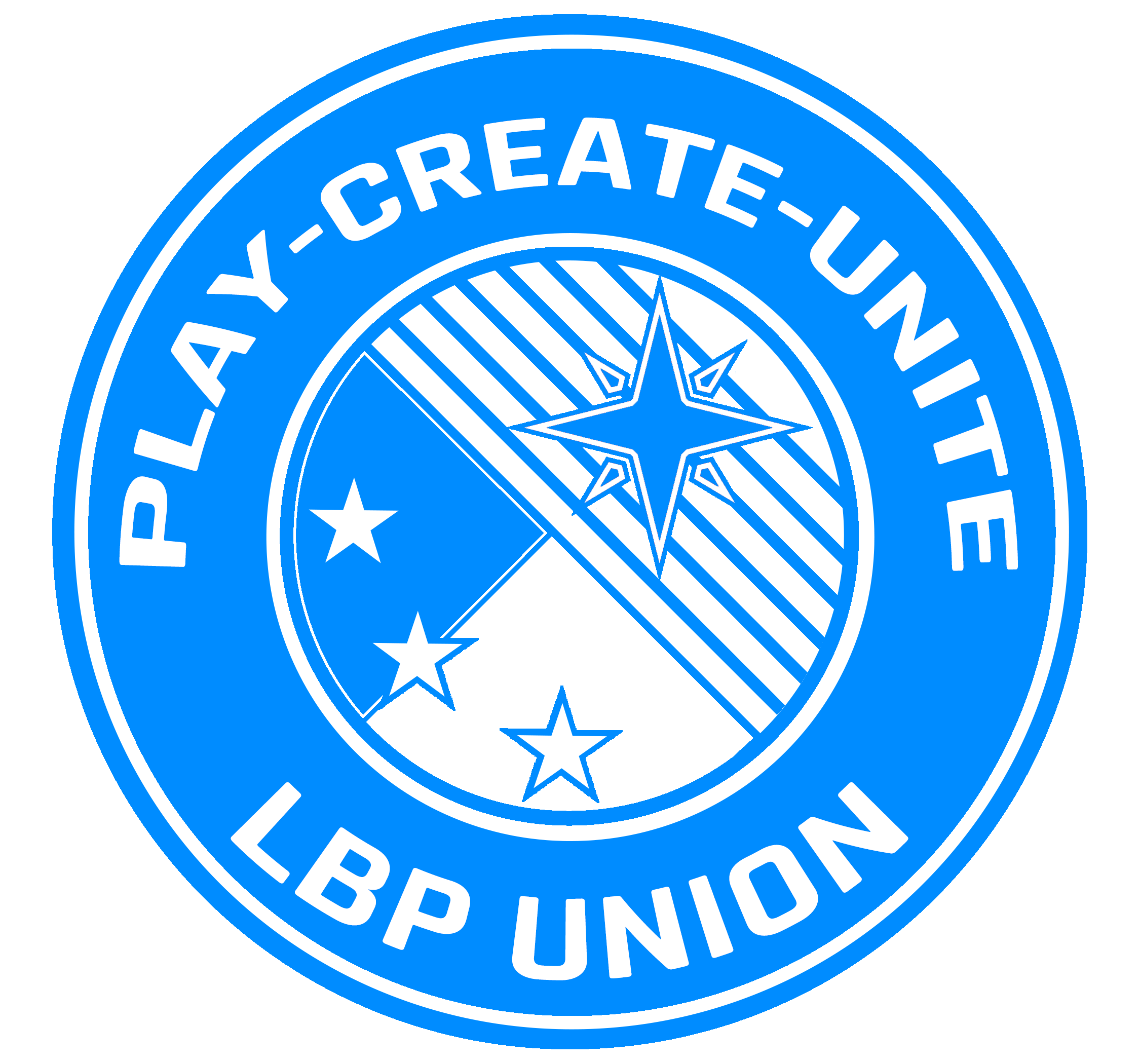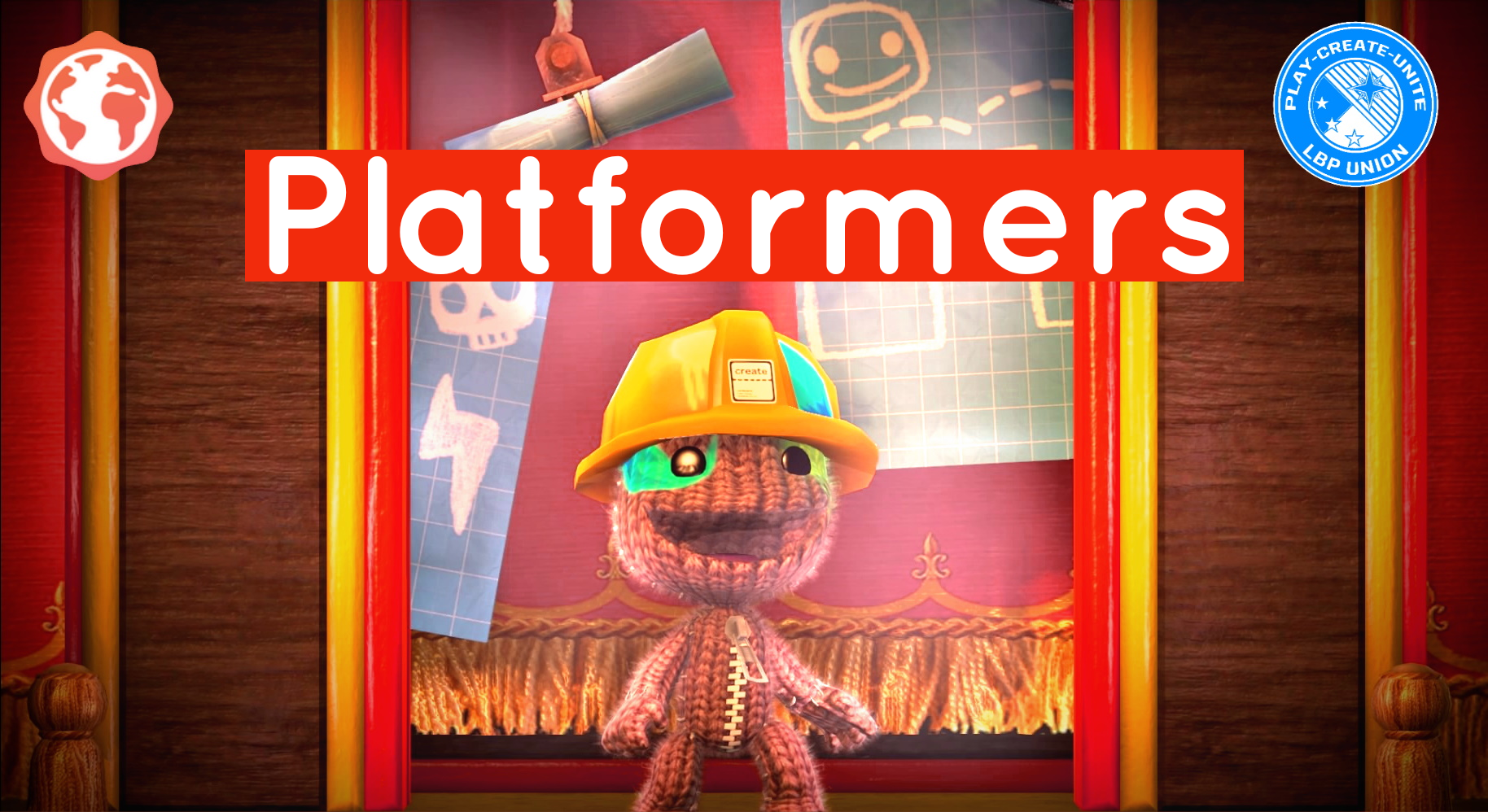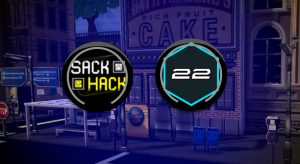This is the first of a series of LBP Union Creative Guides. In the future, there will be a Creative Guide hub page that will allow you to browse and find various different instructional articles and tutorials. This is the first of them about creating platformers. If you would like to help share your LBP creative knowledge with others through these guides, consider applying for our Scribe team!
The heart and soul of LittleBigPlanet is platforming. Since this is where LittleBigPlanet got its start, platformers are some of the most popular levels in the game. However, making a quality plaormer can be a bit intimidating to some creators. How can we improve our LittleBigPlanet platformer levels?
This is a guide that can help you exactly that! In what follows, we’ll talk about eight steps to improve your platforming projects!
These tips were used heavily by tfthe creators of the Return to Carnivalia adventure.
Tip #1 — Use Grid to Improve Alignment & Spacing
Grid is a feature that allows you to align various parts of your level. You can use grid to align materials, objects, stickers, decorations, logic, and other bits and bobbles.
Grid is especially helpful when trying to make things straight, parallel, perpendicular, or precise. It’s also very important for achieving symmetry.

You can configure grid in the Start or Options menu.
To turn on grid mode, first enter create mode. Then follow these steps:
- Press Start or Options.
- Use the left analog stick or D-Pad to select the grid option.
- Tap left and right to select Small, Medium, or Big.
Generally, the best grid size to use is small. It’s important to make sure that grid is used as much as possible to maintain a clean look to your level. It’s also helpful when you want to edit an earlier part of your level later on.
However, as with every tip, there are exceptions. Sometimes grid is not great for placing objects more precisely than small grid can offer. It may be helpful to turn off grid momentarily to place decorations or stickers before continuing.
Additionally, some shapes do not align correctly with the grid. For example, triangles do not align correctly with grid because the grid is locked to a square shape.
Tip #2 — Consider Path Size & Blockiness
If the player in your level is going to be walking on materials and paths, it’s important to make sure that these materials are the right size. Notice that when you go to place a square shape from your popit in create mode, the default size of the block is about 4×4 small grid blocks, or one large grid block. This is usually the best size for you to use when drawing paths.
Although this size is a good best practice, there are certainly times when you may need to have smaller platforms and paths than normal. Don’t be afraid to bend the rules a bit!

Consider the size of the block you use to draw paths.
It’s also a good idea to consider how ‘blocky’ your level should be. Most platformers are very rigid, with platforms and paths having very rigid corners. However, you should consider what your level might look like with curving sloped paths. This can help contribute to a more smooth feel to your level.
Ultimately, the ‘blockiness’ of your level is up to you and your aesthetic!
Tip #3 — Use Modular Level Design
This may sound complicated, but using modular level design actually makes creating levels easier! Modular level design is where each piece of your level is independent from other pieces. This allows you to be able to rearrange the pieces in any way you’d like or even reuse some pieces.

Make paths modular to speed up level creation and make things more consistent.
How you choose to implement this idea is up to you. However, you can start by making sure that every section of your level is a separate piece. Avoid gluing objects together unless absolutely necessary. This is important to consider for another reason: if too many objects are glued together, your level’s performance will drop!
If you aren’t gluing objects, how can you keep them in place? The best way to do this depends on the game that you are using.
LittleBigPlanet 1: Use Dark Matter & Connectors
In LBP1, the best way to keep things from moving is to glue objects to dark matter. Another way to keep things from moving is to attach objects to dark matter by using connectors like rods or pistons. Just keep in mind that the more vertices you use, the less performance you will get.
LittleBigPlanet 2: Use Anti-Gravity Tweaker Dampening
In LBP2, you can freeze objects in place with the anti-gravity tweaker. Set the tweaker to 100% dampening to cause the object it’s connected to have similar properties to dark matter. The object will refuse to move as long as the tweaker is turned on.
Here’s a video from LBPlanetorials about how to do this yourself!
LittleBigPlanet 3: Set Objects to Static
Finally, LBP3 offers the most efficient way to freeze objects in place without gluing them. Press square while selecting an object and then toggle on the static setting to make sure that the object does not move. Since this requires no logic, gluing, or connecting of any kind, it should affect the performance of your level the least.
Tip #4 — Optimize Your Level for the Best Performance

There’s a lot of detail in this scene, but it has been optimized to run more smoothly on your console.
No matter which LittleBigPlanet game you are creating with, optimization is extremely important. However, it’s not always obvious how to optimize your levels in LBP. How can we make them run faster? This is a topic that we intend to go into much greater detail with on a later date, so here are a few easy tips on how to help optimize your levels!
Geometry: Reduce Vertices In Your Level
Vertices are the corners of shapes. The more vertices a shape has, the more of an impact the shape will have on the level’s performance. It’s important to reduce the number of vertices as much as possible.

The triangle is the polygon with the fewest vertices.
If you are using floating, invisible logic, be sure to place it on triangles instead of any other shape. Triangles have the fewest vertices of any shape in LittleBigPlanet. Remember, every little bit helps when it comes to optimizing your level’s performance.
Graphics: Make Things Invisible
I learned this trick not from level design, but instead from mech battle! When spawning hundreds of level-sized hologram bombs, the game’s framerate slows down to a crawl. However, if the holobombs are invisible, the game’s performance doesn’t suffer as much.
The same can apply for our levels. If we make sure that certain things are made invisible when possible such as logic and wires, we can better optimize!
In LBP3, you can make things invisible with the opacity tweaker. In LBP2 and 3, you can change the opacity of certain materials like hologram and sticker panel to make them invisible as well. This is helpful for things like floating lights, cameras, and logic.
Dephysicalizing: Disable Collisions & Movement When Possible

The Dephysicalizer is exclusive to LBP3, but an unreleased version exists in LBP2.
Every object with collisions in the game takes up slightly more processing power. If the player won’t come in contact with an object, there’s no need for it to have collisions. The same goes for dynamic objects. Static objects that cannot move take up less processing power.
To optimize our levels, we need to dephysicalize objects that don’t need to move or be interacted with and make them static. This is especially important for decorative objects in the background or foreground.
Unfortunately, the dephysicalize tool is only available in LittleBigPlanet 3. An unreleased version exists in LBP2, but it is only obtainable through modding.
Avoid Glue

We wouldn’t want you to get into a sticky situation, now would we?
Unless absolutely necessary, you should refrain from gluing objects together. This makes objects more complicated and slows the game down. If you don’t want objects to move, refer to the tips above about how to make objects static.
Tip 5 — Utilizing Background Layers
If you are creating in LittleBigPlanet 3, utilizing all 16 layers is a great way to make players feel more immersed in the world of your level. It also is a great way to help your level look more ‘official’ if you are going for a LBP story mode aesthetic.
Background decor is important, but so is background gameplay. Layer launchers are a great way to quickly yeet players into the background and foreground layers. However, it’s important to consider the distance that you should use with the launcher. A good rule of thumb is to keep five layers between the front and back layers. This isn’t an explicit rule, but it’s a good guide to use when programming layer launchers.

Try to keep five layers between the layer launcher and the destination.
When arranging background decor, make sure not to make it too cluttered. The player should naturally be able to tell whether or not they are supposed to interact with the decor in the background or foreground layers.
Layer launchers are a great way to move between layers, but they aren’t the only way. Try and spice things up a bit with slides, velociportals, and other imaginative methods!
Tip #6 — Foreground Layer Guidelines
Keeping in mind what we talked about with background layers, keep in mind how you should use decor in foreground layers. Try and leave enough space between the playable layers and the foreground layers so that the player doesn’t feel too cramped. A good best practice is to leave about two layers of space in front of the level’s first playable layer.

Foreground decor shouldn’t obstruct the player’s view.
Adding decorations here can help give your levels more depth. However, keep in mind that you don’t want to clutter up this space or obstruct the player’s view. A story mode level that you might find helpful for this is the Ziggurat level “Tutu Tango”.
Although LBP1 and LBP2 levels cannot use playable layers beyond the three provided, it’s possible to use the 3D glitch to create very immersive scenes using these same tips.
Tip #7 — Use Gameplay Motifs
Although this is a method that professional game developers use, you can use it too to help you make your levels! Gameplay motifs are reoccurring elements of your level. In the case of platformers, we’re talking about challenges, puzzles, obstacles, and pathways.
The best way to utilize gameplay motifs is to sketch them out before working on your level. Open up an empty level and use cardboard and other basic materials to create a minimum viable product, or the bare minimum of your idea.

Gameplay motifs can be created with basic materials like this.
By sketching out your ideas like this, you can create the modular pieces of your level that can be used in full later. This makes it easier to edit pieces of your level without affecting other pieces.
Once you are finished, you can insert the pieces into your level. See our tips about modular level design above.

As an example, if you want to create a segment of gameplay where Sackboy needs to grab onto a spinning wheel to get across a chasm, you can create a gameplay motif somewhere else. Once you’ve completed the basic outline, you can plug the design into the level and decorate it.
This method allows us to easily copy, paste, and reuse gameplay segments throughout or levels. It also helps us remain consistent when designing our levels. By making sure that each part works independently, we can more easily make sure that our level is running properly.
Tip #8 — Wireless Logic vs Wired Logic
When programming levels, most creators will jump to wire up logic. However, this can actually slow your level down and cause problems when dynamic thermometer is in use. Personally, I’ve created logic projects so complex that my framerate slows down to a crawl when my circuit boards are open. What a mess!

Wireless logic can help you optimize levels and keep down on clutter.
Here are some common steps you can consider to optimize your logic:
- If the logic needs to connect to something that isn’t attached to the object, consider using tags and tag sensors to broadcast the signal.
- Remote tag sensors should be used with dynamic thermometer levels. Sensor radii can increase the loading zone and decrease your level’s performance.
Wireless logic can also solve a few other problems. Wiring logic together across your level can be messy and difficult to work with. This is especially important when going back to work on things you had done previously. Often times I don’t even remember how I wired things up! Dynamic thermometer levels with wired connections can also cause trouble if not all pieces load at the same time.
It’s also important to consider labeling your input and output ports if you are using wired logic. This can help you troubleshoot problems later on and edit what you’ve worked on. Simply hover the popit cursor over the input or output node and press square to edit the name. When hovering over it after setting the name, you will see a tooltip with the name you chose.

Set tag labels to help make your wireless logic projects work correctly.
Remote tag sensors are the most useful tool in LBP3 for wireless logic. However, not all users have access to this logic piece in LBP2. In LBP2, do not use tag sensors set to infinity, as these can cause problems in online play. Instead, set the radius to 5,000 units.
If you have any issues with dynamic loading and tags in LBP3, you can use permanency tweakers, dynamic linking, and pre-loaders.
Platform for Success!
Now that you know about these 8 tips for improving your platformer levels in LittleBigPlanet, you’re ready to get out there and make some awesome projects of your own! Be sure to share your projects with us in the Showcase category on our forum!
Special thanks again to the creators of Return to Carnivalia for providing the original content this article was based off of as well as the images. Their expertise learned through various projects such as Return to Carnivalia is extremely valuable to the community and we are overjoyed to be able to help share that knowledge with the rest of the community!
Want to contribute a guide of your own to help other creators? Consider contributing an LBP Community Guide! If you’d like to help us create new official guides, apply for our Scribe program!




